- You can clean an RV awning with water, gentle soap, a soft brush, and careful technique.
- Regular cleaning stops stains, mold, and odors from building up.
- Fabric and vinyl awnings need different cleaning methods.
- Patience is key, rushing can damage your awning or leave it streaky.
If you want your RV awning to last, you need a cleaning plan. Most awnings collect debris, bird droppings, tree sap, and mildew faster than you expect. If you avoid cleaning it, or rush, you will probably see stains and maybe even rips before long. People sometimes overthink this, there is no secret formula, but you must stick to a few proven steps, use the right tools, and know when to be gentle.
What You Need to Clean an RV Awning
Before you even start, assemble a few basic things. Most of these you probably already have. Some might be in the back of your garage.
- Hose with spray nozzle (or a big bucket if water is limited)
- Quality, gentle soap (like dish soap or awning-specific cleaner)
- Soft brush (not a broom, and not a stiff scrubber)
- Step ladder (unless your RV is short or you are very tall)
- Sponges or microfiber rags
- Garden sprayer (optional, but makes rinsing easier)
- White vinegar or baking soda (for tricky spots)
Getting ready by gathering supplies saves so much time and frustration in the middle.
If your awning brand recommends a cleaner, use it. Otherwise, go with mild soap. Strong chemicals can weaken the fabric or peel vinyl before you know it.
Types of RV Awning Materials and Why It Matters
RV awnings are usually either vinyl or acrylic (sometimes called “fabric” awnings). Each has small differences during cleaning.
| Material Type | Common Brands | What It Handles Worst | Notes |
|---|---|---|---|
| Vinyl | Carefree, Solera, Dometic | Mold/mildew, strong cleaners | Feels smooth, can usually scrub gently |
| Acrylic/Fabric | Sunbrella, OEM fabric | Harsh brushing, leaving soap residue | More breathable, dries quicker |
Check your manual if you are not sure which type you have. Using the wrong method or chemical is a common reason for awning problems.
Step-by-Step: How to Clean an RV Awning
Almost all awnings, no matter the style or size, follow the same basic steps. Patience matters. Rushing will just create more work or damage.
1. Extend and Inspect
Open your awning all the way. Check for damage, especially rips, weak seams, or loose arms. No point washing it if you spot a big tear (that needs patching first).
Unroll until the whole thing is exposed. If yours is power-operated, keep it unplugged while you clean.
You might think your awning looks fine when it is rolled up, but dirt builds up inside those folds.
2. Remove Loose Debris
Before water or soap, use a dry brush or a clean rag to remove dry debris. Do not start with water; this just creates mud. Pay special attention to tree seeds, pine needles, and bug cocoons hiding in the seams.
3. Wet the Awning
Spray the whole surface with a hose (medium pressure is safest). For waterless campsites, use a bucket gently, do not dump too much at once or soak the RV body. Be careful: cheap hoses sometimes spray harder than you think.
4. Apply Cleaner
Mix your soap and water. Standard dish soap works. For extra mildew, a splash of white vinegar helps (never bleach! it breaks down fabric). If your awning is filthy, try an awning-specific cleaner, but check the label.
With the awning damp, use a sponge or soft brush to gently scrub. Start at the edges and work towards the center. Only use up and down or side to side strokes, not circles, which can wear fabric.
Let the soap sit 5 to 10 minutes for stains, but never let it dry on the surface. The soap residue makes staining worse over time.
People rush here. Give the cleaner time to work, but watch those patches where the sun dries things quickly.
5. Spot-Treat Problems
Some areas may need extra attention. For mildew or sticky spots, mix one part white vinegar to four parts water. Dab it gently and then allow a few minutes before a soft scrubbing. If that does not work, some use baking soda paste, very gently, but only for vinyl.
Avoid any colored soaps or odd chemicals, as these can stain.
6. Rinse Well
Rinse the whole thing thoroughly. If any soap is left, it becomes sticky or streaky once dry. Use your hose to spray from top to bottom. For folding awnings, rinse the inside too. If you do not, the next rainstorm will wash old soap all over your RV.
7. Let It Dry Completely
Leave the awning extended for a few hours. Even small damp spots lead to mildew. Drying in the shade is better than full sun (if possible) since hot sun can shrink fabric over time. If a storm is coming, towel it off and wait until you have a dry window.
Rolling up a barely-damp awning is the fastest way to create mildew and odors you cannot get rid of.
Extra Cleaning Tips for Tricky Situations
Every RV owner faces their own challenges. Some issues need more careful attention.
- Tree sap: Rubbing alcohol (applied gently with a rag) can loosen stubborn sap. Test on a tiny patch first.
- Mildew: Vinegar solution is best, but if you have black spots that do not budge, try a bit of diluted hydrogen peroxide. Rinse fast and thoroughly after.
- Bird poop: Do not scrape with sharp objects. Soak with water, wait 5 minutes, then wipe away with a soft cloth.
- Heavy stains: Awning-specific cleaners may help, just do not use bleach or anything grainy.
- Colored awnings: Be sure cleaner is color-safe. Some soaps will fade bright-blue, green, or striped fabric.
Always test a new soap or treatment on a small corner before doing the whole awning. Not every product plays nice with every fabric.
What Not to Do When Cleaning Your Awning
People often make mistakes that shorten the awning’s life or create new issues. Slow down, and watch for these common pitfalls:
- Never use strong bleach or pressure washers. Both will damage, stain, or rip your awning.
- Do not leave cleaner to dry on the fabric. It locks in new dirt and leaves film.
- Skip abrasive scrubbers. They ruin coatings and break fibers (even if it feels fast in the moment).
- No need for weird home hacks. Toothpaste, nail polish remover, or degreasers can do more harm than good.
- Avoid folding up the awning when it is wet or soapy.
Some guides suggest magic ingredients or “miracle” products. They are often not worth the risk.
Simple Awning Maintenance to Prevent Tough Cleaning
The best way to make awning cleaning easier is steady prevention. Here are a few habits that make routine cleaning easier and stop most major problems before they start.
- Brush off debris every few days, do not wait for leaves and seeds to rot in the rolls.
- Never leave the awning out during heavy rain or wind. Water collects and stretches the fabric. It is tempting to leave it out for the shade, but strong wind can mess up the arms and rip seams too.
- Inspect for tiny pinholes or fraying before every trip. Small repairs are easier than fixing a rip later.
- Consider rolling the awning in when away from camp, to avoid surprise storms (or squirrels, which cause their own problems, but that is another post).
- If possible, apply a UV protectant spray (made for awnings) every season. It costs less than one repair and slows down sun fading.
Cleaning Frequency: How Often Do You Need to Do This?
For most RVers, once at the start of the season, and once more midway through, keeps things in shape.
If you travel under pine trees, or spend time in high-humidity camps, you may need to clean every one or two months.
Urban and desert RVers usually have it easier, but check for sand and dust, which collect and grind up the seams over time.
Over-cleaning wears fabric down, so stay gentle and only clean when needed.
DIY or Professional? When to Call for Help
Most cleaning can be handled by you in an afternoon. If you have a high-end awning, or it looks like a science experiment grew on it, professionals exist for a reason.
Signs you might need help:
- Large mold infestations that do not go away with gentle vinegar wash
- Serious rips, holes, or metal arm damage found during inspection
- Awnings you cannot reach safely even with a ladder
- Stuck motors or power failures, these need expert attention first
A professional cleaning is not cheap, but if your awning is expensive, it makes sense once a year to prolong its life.
What to Do After Cleaning
Once dry, inspect for leftover stains or weak spots. Patch up pinholes with a kit before they grow. Lubricate moving parts (use awning-safe dry lube, not grease) and check again for any rust or corrosion.
If you took the time to clean the awning, it makes sense to double-check seals, tension, and the RV wall as well. Water stains on the side of your RV usually mean drip lines need cleaning too.
FAQ
How can I prevent mildew from coming back?
Try to never roll up the awning when damp. If you must, unroll as soon as you park where it is dry. For humid trips, wipe down the fabric after each use. Mildew loves trapped moisture and darkness.
Can I use a pressure washer?
I do not recommend it. Pressure washers can rip the fabric or push water past seals, creating new problems. If you must, keep it on the weakest setting and hold it several feet away, but honestly, a hose is much safer.
What about cleaning underneath the awning?
You should. Dirt, wasp nests, and webs collect there. Use a soft rag and regular soapy water. Remember to rinse well so you do not build up sticky film.
My awning has a persistent smell. What now?
Try cleaning with vinegar water. If the smell remains, it probably dried while dirty or stored damp. Sometimes sunlight helps, but deeply set odors can mean it is time to replace the fabric.
Is it worth using a special awning cleaner?
If you camp under trees or in camps with mildew issues, yes. For the average owner, gentle soap works. Specialized cleaners help with tricky stains, but read labels first.
Cleaning your awning is less about shiny results and more about keeping big repairs and costly replacements at bay.

